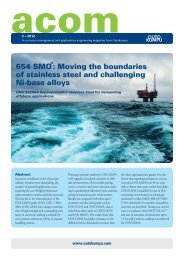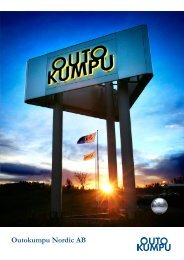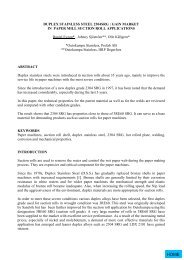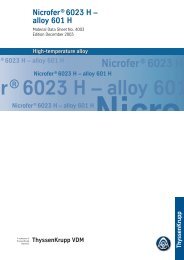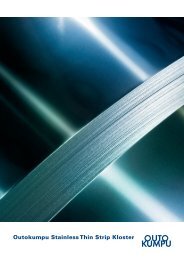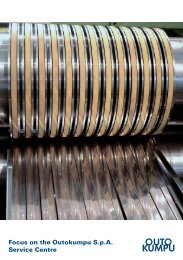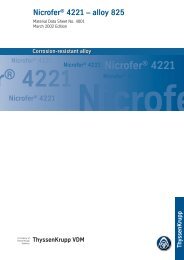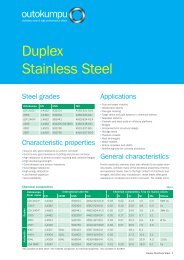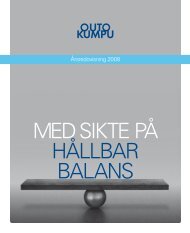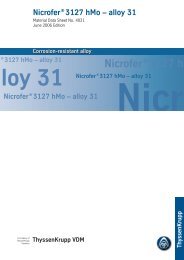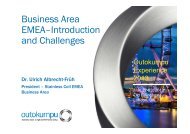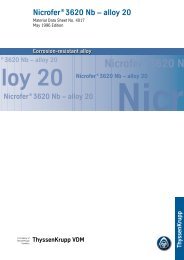Annual Report 2010 - Outokumpu
Annual Report 2010 - Outokumpu
Annual Report 2010 - Outokumpu
You also want an ePaper? Increase the reach of your titles
YUMPU automatically turns print PDFs into web optimized ePapers that Google loves.
81<br />
ficiation and clarification basins all have a long-term effect on the landscape. Tailings basins are landscaped after they<br />
have filled up. The gangue will be used in backfilling the underground workings. The Kemi Mine only uses water (and a<br />
minor amount of flocculant) in its concentration processes as these are based on gravimetric separation. The amount of<br />
water used annually is approximately 0.3 million cubic metres. The noise caused by blasting operations is almost<br />
inaudible, even in the mine area. According to environmental impact assessments performed in 2009, the only significant<br />
effects result from the increased traffic generated by transporting concentrate from the mine to the Tornio ferrochromium<br />
plant. These effects were further mitigated by a new transport road taken into use in <strong>2010</strong>, which minimises potential<br />
disturbance to residential areas.<br />
Reductions in emissions<br />
Dust emissions from <strong>Outokumpu</strong>'s operations typically contain small quantities of metals (including iron, chromium and<br />
nickel) which are mainly present in a harmless form. Chromium, for example, is usually found in its trivalent form and not<br />
in the hazardous hexavalent form. In recent years, the Group has supported many studies investigating the effects of<br />
metal emissions on both the environment and human health.<br />
Emissions of nitrogen oxides were on a higher level in <strong>2010</strong> (1 742 tonnes) compared to 2009 (1 254 tonnes) due to<br />
higher levels of production. To minimise emissions, <strong>Outokumpu</strong> production sites in Avesta, Nyby and Tornio are<br />
employing the latest burner technology and selective catalytic reduction technologies in certain processes.<br />
Continually improved monitoring reduces environmental risks. For example, particle emissions from the steel melting<br />
shop in Tornio have been monitored using a continuous emissions-measurement system since the beginning of 2007.<br />
This more detailed daily emissions data helps immediate detection of potential filter leakages. The primary origin of the<br />
Group's sulphur dioxide emissions is the district heating unit at Tornio Works which is used only occasionally during the<br />
cold winter season.<br />
Recovering heat from furnace gases at the Tornio and Avesta Works also reduces <strong>Outokumpu</strong>'s energy consumption.<br />
Emissions of nitrogen oxides, carbon dioxide and<br />
<strong>Outokumpu</strong> <strong>Annual</strong> <strong>Report</strong> <strong>2010</strong> – Business – Emissions and effluents




